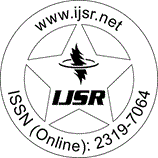Downloads: 171 | Views: 484 | Weekly Hits: ⮙1 | Monthly Hits: ⮙1
Research Paper | Language Research | Indonesia | Volume 8 Issue 12, December 2019 | Popularity: 7 / 10
Effectiveness of Grammarly Application for Writing English Abstract
Umu Fadhilah, Lizawati, Hotmaria Julia Dolok Saribu
Abstract: The abstract is a comprehensive summary of the article's contents. The difficulty of writing English abstracts still necessitated by the mastery of the language, grammar, and words. Grammarly is an application that used to correct errors in writing abstract English text. The purpose of that study was to determine the effectiveness of Grammarly for writing abstract English. This study used a pre-experiment method. The research population was all seventh-semester students who were randomly selected as research samples. Data were collected by using the abstract text written before using Grammarly (pre-test) and abstract text that had been corrected by using Grammarly (post-test). Analysis Results showed a pre-test value of 64.86 with a standard deviation of 18.89 and a post-test of 85.72 with a standard deviation of 6.82. The results of the hypothesis test using a Paired t-test obtained p-value 0.00 (
Keywords: Grammarly Application, Abstract, English language
Edition: Volume 8 Issue 12, December 2019
Pages: 163 - 166
Please Disable the Pop-Up Blocker of Web Browser
Verification Code will appear in 2 Seconds ... Wait
